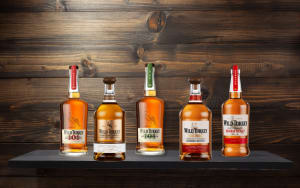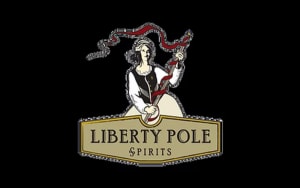In the rolling hills of Kentucky, where bourbon has been king for generations, Heaven Hill Distillery stands out not just for its size but for its stubborn family grip on the craft. Founded back in 1935 by the five Shapira brothers—immigrants who saw promise in the post-Prohibition dust settling over Bardstown—they built a place that turned clear "white dog" spirit into amber gold. That first barrel filled on December 13, just weeks after the doors opened, kicked off a legacy that's outlasted fires, floods, and market crashes. Today, as the largest independent, family-owned distiller in America, Heaven Hill doesn't chase trends. They set them, one barrel at a time. And now, with their latest Grain to Glass Specialty Barrel Series, they're betting big on an oak that's as under-the-radar as it is game-changing: Chinquapin.
Picture this: It's the mid-2010s, and Max Shapira, the third-generation chairman who's got his dad's no-nonsense drive, starts dreaming up a line of whiskeys that tells the full story from dirt to dram. Grain to Glass isn't about slapping a fancy label on old stock. It's about picking a single corn seed, watching it grow in Kentucky soil, mashing it with grains from nearby farms, distilling it on-site, and letting it age under their watchful eye. The 2024 debut— a high-rye bourbon, a wheated version, and a straight rye—hit shelves like a quiet thunderclap. Critics raved: Whisky Advocate slotted the bourbon at No. 5 on their top 20 list with a 94 score, the wheated took double gold at the SIP Awards, and the rye snagged Best American Rye at the World Whiskies Awards. But Heaven Hill wasn't done. For 2025, they twisted the dial further, launching a Specialty Barrel offshoot that swaps the usual white oak for something rarer. It's a move that feels like a nod to the old-timers who tinkered in sheds, but with the muscle of a modern powerhouse behind it.
What makes Chinquapin oak tick? It's no stranger to the whiskey world, but it's the supporting actor, not the star. Part of the white oak family—Quercus muehlenbergii to the botanists—it's native to the central and eastern U.S., thriving in drier spots than its beefier cousin, Quercus alba, the go-to for most bourbon barrels. Those sweet acorns it drops? They're the sweetest in the oak lineup, packing a natural sugar punch that seeps into the wood. That translates to higher vanillin levels—think vanilla's cozy cousin—without the bite. Where standard white oak gives you solid caramel and vanilla with a tannic edge, Chinquapin dials up the creaminess. It pulls out butterscotch waves, hints of crème brûlée's caramelized crust, toasted nuts that crunch like fall leaves underfoot, and even subtle chocolate and coffee grounds for depth. The grain's tighter, which means less leak and a bolder interaction with the spirit. It's not just aging; it's a conversation between wood and whiskey that builds a mouthfeel with real weight—velvety, not watery—and a finish that layers on like a good cigar's haze.
Heaven Hill didn't stumble into this. Their team, led by Master Distiller Conor O'Driscoll, hand-picked these barrels with Independent Stave Company, the cooperage giants who've been shaping staves since 1912. No shortcuts: The whiskeys barreled at 107 proof, the exact entry strength the Shapira founders swore by back in '35, then sat non-chill filtered for six full years in rickhouses at the Cox's Creek campus. That lets the oak do its work without interference, pulling flavors straight from the char. The result? Three expressions that clock in at barrel strength—105 proof for the bourbons, 107 for the rye—each priced at $129.99 for a 700ml bottle. Limited run, national drop starting November 2025. If you're the type who hunts allocations like deer season, mark your calendar.
Let's break them down, pour by pour, because that's where the rubber hits the road. Start with the Kentucky Straight Bourbon Whiskey. This one's a high-rye recipe: 52% corn (that star varietal, Beck's 6225, grown by Peterson Farms right across from their Bardstown HQ), 35% rye for kick, and 13% malted barley to round it out. Higher rye than their Elijah Craig core means more spice upfront, but the Chinquapin tempers it. Nose it neat, and you're hit with rye's herbal zip—dill and lemongrass cutting through sweet corn silk—before the oak sneaks in with toasted hazelnut and a whisper of coffee. On the tongue, it's bold: Butterscotch melts into crème brûlée sweetness, chased by rye's black pepper snap. The mouthfeel coats like heavy cream, and that finish? Layered oak lingers with nutty warmth, fading to a soft chocolate echo. At 105 proof, it's got heat but no harsh burn—perfect for sipping by a fire or mixing into an Old Fashioned where the bitters play off the rye.
Shift to the Kentucky Straight Wheated Bourbon Whiskey, and things soften up. Same corn base, but wheat steps in at 35%—way more than the 20% in their Larceny lineup—dialing back the spice for breadier notes. Peterson Farms grew that wheat too, in no-till fields that keep the soil honest. The Chinquapin oak shines here, amplifying the wheat's doughy comfort with vanillin-rich cream. Expect aromas of fresh-baked rolls laced with almond toast and a caramel swirl. Sip it, and it's like biting into a nutty pastry: Toasted pecans mingle with butterscotch drizzle, crème brûlée's scorched sugar adding edge. The proof (105 again) brings a gentle warmth that builds to a finish of lingering oak spice and faint coffee grounds—smooth enough for straight pours, versatile for a wheated Manhattan that leans elegant. This one's the crowd-pleaser for evenings when you want comfort without compromise.
Then there's the Kentucky Straight Rye Whiskey, the wild card at 107 proof. Mashbill's straightforward: 63% rye for that bold, grassy punch, 24% corn to sweeten the pot, and 13% malt for body. Chinquapin oak takes the rye's natural herbal fire and wraps it in nutty silk. The nose jumps out with rye bread crust, caraway seeds, and a toasted walnut edge, undercut by chocolate nibs. Palate-wise, it's a ride: Initial spice blooms into coffee-infused butterscotch, with crème brûlée adding a custardy bridge. The mouthfeel has real presence—bold, not brash—and the finish trails with layered oak, lingering pepper, and a nutty afterglow that begs for another sip. Rye lovers will geek out; it's got the spice of Rittenhouse but with oak depth that makes it a sipper, not just a mixer. Try it in a Sazerac, and watch the absinthe rinse dance with those herbal notes.
These aren't just whiskeys; they're a masterclass in how oak rewrites the rules. Bourbon mandates new charred oak, sure, but within that, choices matter. Standard white oak—tight-grained, water-tight—delivers reliable vanilla and tannin. But Chinquapin's porosity speeds things up, extracting more compounds faster, which is why these six-year-olds punch like older siblings. It's a trick other distillers have toyed with—Glenmorangie ran a chinkapin Scotch experiment in the '90s—but Heaven Hill's going all-in, full maturation, no finish-only gimmick. Pair that with the Grain to Glass transparency—labels spell out the mashbill, corn type, distillation year (2019 for these), even warehouse details—and you've got bottles that feel personal, like a story shared over the bar.
Heaven Hill's path here echoes their grit. That 1996 fire? It torched seven rickhouses, 90,000 barrels, and sent bourbon rivers down the highway. They rebuilt, snagged the Bernheim Distillery in Louisville in '99 (now the world's biggest single-site bourbon plant), and kept pumping out icons like Elijah Craig, which they launched in 1986 to pioneer small-batch. Or Evan Williams, their everyday hero since the '50s. Bottled-in-Bond? They make more than anyone, a throwback to 1897 laws that guaranteed purity when snake oil ruled. And with the new $200 million Heaven Hill Springs Distillery opening in Bardstown last month, they're doubling down on home turf production. It's all family: The Beams—Joseph started as first master distiller, kin to Jim Beam himself—handed the torch to Parker, then Conor O'Driscoll, who's got that Irish fire for innovation.
For guys who've got a shelf of standards and a nose for what's next, this series lands like a well-timed right hook. It's not cheap at $130 a pop, but neither is chasing rarity in a world of endless allocations. These bottles—embossed "Family Owned Since 1935," with jewel-toned labels sketching Bernheim blueprints and farm scenes—reward the hunt. Stock up if you can; they're gone fast. Or better yet, plan a Kentucky road trip: Hit the Bourbon Heritage Center in Bardstown for tours that walk you through the rickhouses, or the Evan Williams spot on Louisville's Whiskey Row. Pour one neat, add a cube, and let the oak tell its tale. In a glass half full of history, Chinquapin's the twist that keeps bourbon evolving—one sweet, nutty sip at a time.
"Selecting Chinquapin Oak for the first Specialty Barrel Series was an exciting opportunity to deepen our exploration of wood and whiskey," said Conor O’Driscoll, Heaven Hill master distiller. “These barrels highlight the interplay between grain and oak in a way that elevates the mashbills, allowing each whiskey’s character to shine at barrel proof.”
And shine they do. In Kentucky's oak-lined playbook, Heaven Hill just added a chapter worth reading twice.




